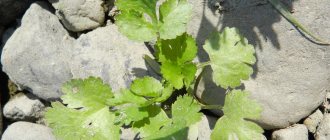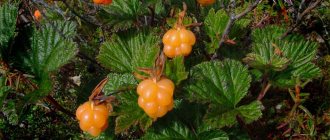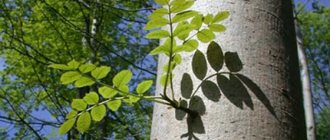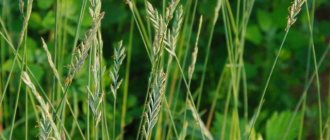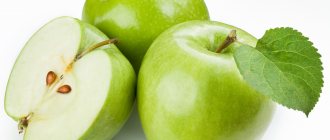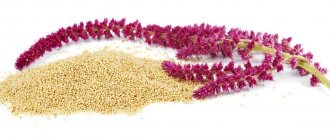- October 9, 2018
- Medicinal plants
- Lukinova Natalya
In recent years, more and more people have been trying to improve their well-being using natural medicine, so a variety of herbs are becoming popular again. One of them was the comfrey plant, otherwise known as larkspur, since its beneficial properties are primarily aimed at treating bones and joints. It not only allows you to quickly regenerate damaged tissue, but also accelerate the healing of fractures and prevent the development of inflammatory processes in the body. This article will talk about where the comfrey plant grows, photos of which will also be presented. In addition, its description and the most famous beneficial properties will be given.
Description
Before you start collecting these herbs yourself, you should carefully study the photo of comfrey so as not to harm yourself later. The fact is that it is very similar to Caucasian comfrey, which does not carry any medicinal properties at all. There is only one difference between them - the shade of the flowers. In the medicinal species we need, they are pinkish-violet, but in Caucasian comfrey they are blue-blue.
Now let's talk directly about the photo and description of medicinal comfrey. In itself, this is a herbaceous plant belonging to the perennials of the Borage family. It has a branched stem that can reach a maximum of a meter in length. At the very bottom, the grass has a tetrahedron shape, which is decorated with large oblong leaves about 15 cm long and only about 5 cm wide. All lower foliage has long winged petioles, but the upper leaves are sessile. All leaves and stems must have hard hairs - this is a distinctive feature.
The flowers have a tubular-bell-shaped appearance during the growing season, but in adulthood they take the form of small panicles. They open at the end of May or at the beginning of June and can have different shades - violet, lilac, purple.
What does comfrey look like when flowering?
The comfrey flower has a bell-shaped type, the buds are collected in racemose inflorescences, which at first have a curved shape, and then straighten and at the peak moment of flowering take the form of drooping bunches. The color palette covers soft watercolor tones, mainly in lilac-blue tones. Within 2-2.5 months after flowering, a non-standard type of fruit is formed, which is a four-hazel tree. The seeds spill out quickly and ripen unevenly, making it difficult to collect them yourself. The situation is complicated by the fact that if you tie the inflorescence with gauze, the fruits inside may not ripen.
Procurement period
In order for comfrey herb to have beneficial properties, it is very important to prepare it correctly. It is worth remembering that flowers are not used in folk medicine, since only roots and leaves are taken. It is necessary to collect plants at different times:
- The roots need to be dug up in early spring, before the leaves begin to bloom. In addition, harvesting can also be done in the fall, after the end of the flowering period. The roots will need to be washed, cut into small pieces and dried.
- The collection of leaves takes place exclusively during the flowering period.
When and how to collect comfrey leaves and rhizomes: harvesting a medicinal plant
Collect flowers, leaves and roots from comfrey. The roots are especially valued, but the leaves also have medicinal properties.
The optimal time to collect larkspur leaves is the first half of the day, when the summer weather is dry and clear. It can be collected throughout the summer and the flowering period (as a rule, it begins to bloom in May and ends in October).
Comfrey roots are harvested in early spring or late autumn. If you decide to collect larkspur in the spring, then you need to do it before the stem and flower appear, since in the summer the beneficial properties of the roots decrease due to the fact that all its forces are spent on the formation of green mass and flowering. In autumn, larkspur roots are dug up after the plant's seeds have completely fallen off.
By the way! After trimming the roots, you can plant the remaining top of the mother plant back into the soil.
How to prepare leaves
After you have collected the larkspur leaves, you should start harvesting them.
Comfrey leaves are prepared for external use, for example, for the preparation of ointments, compresses and poultices,
The leaves need to be chopped fairly coarsely (there is no point in chopping them too much). Next, they should be laid out in an even thin layer on newspaper or something more suitable to dry. The drying place should be dark (out of the sun), well ventilated and cool.
Once the leaves are dry (usually 3 to 4 days), you can easily crush them into powder.
It is better to store dried comfrey leaves in a linen bag (so that they do not caking), as well as in a cool and ventilated room.
Harvesting larkspur roots
Rhizomes should be thoroughly washed in clean water. Then break off the young and succulent roots from the mother plant. Now they need to be cut lengthwise. And then first put them in a sunny place to dry in a draft, and when they wilt (become like dried apricots or raisins), drying of the healing larkspur roots should be continued in a dark and warm room.
By the way! If you were unable to find comfrey and/or dry its roots, you can purchase ready-made ones in a package.
Video: what are the benefits of comfrey rhizomes and how to prepare them
Habitat
We have provided a description and photo of the plant. Where does comfrey grow? In total, there are about 17 species of this plant in Russia, but we will focus on the medicinal one. It can mainly be found in Western Asia and Europe, and to be more precise, in Siberia, the Carpathians, in the foothills of the Caucasus, in the Crimea. If you are wondering where the comfrey grass grows, the photo of which was presented above, then you should choose damp places. It can be found in deciduous forests, near various bodies of water, on the outskirts of swamps, meadows and clearings with wet soil, and in ravines. In some cases, it can be safely grown even in vegetable gardens and orchards if it is watered abundantly.
Beneficial features
Now that it has been clarified where the comfrey plant grows, and the photo with a description has also made it clear what kind of plant it is, let’s move on to its beneficial properties. In fact, the range of its use is quite diverse, since at the same time it can have an anti-inflammatory and regenerating effect. The whole plant is filled with useful substances, although, as mentioned earlier, the bulk is stored in the root.
The main beneficial properties of comfrey include:
- the ability to slow down and even quickly stop external and internal bleeding;
- ensuring accelerated fusion of bone tissue during dislocations and fractures;
- improved appetite;
- reducing the pain of symptoms that manifest themselves in diseases of the colon and hemorrhoids;
- decreased blood sugar levels;
- improving the functioning of the respiratory system;
- anti-inflammatory and antimicrobial effect;
- reduction of pain after injury;
- stimulating accelerated regeneration of body cells;
- strengthening the intestinal muscles and solving the problem of diarrhea;
- Providing a therapeutic effect on the skin for allergies, skin diseases or injuries such as burns.
Looking at the photo of the comfrey plant, it is really difficult to believe that this plant has a huge number of beneficial properties. It is quite universal, and therefore is used very often in the form of various tinctures, lotions, and compresses. In addition, it is part of a number of medicines that are used in official medicine.
Plant danger
Comfrey is a poisonous plant, so it should definitely not be eaten. Even when used as lotions, you should definitely take this fact into account and use a small amount, otherwise you can get burns, problems with the liver and the central nervous system.
Compositions for use must be made on a fat basis, so there is no need to even think about applying a fresh leaf to the wound. Ointments are also not rubbed directly into the damaged area, but only slightly rubbed near the wound. In this regard, decoction compresses are indeed the safest way to use, since they can be applied to bruises.
Contraindications
Under no circumstances should comfrey be used if the following contraindications exist:
- pregnancy at any stage, as well as while breastfeeding;
- It is also not recommended to use it on children - the minimum threshold is set at 7 years, although it is still better not to use it until adulthood;
- if you have hypersensitivity or an allergic reaction to the herb itself.
But in any case, comfrey can definitely be used only after consultation with a doctor in minimal quantities so as not to cause harm to health. An overdose of it is very dangerous, as it can cause disruption in a number of internal systems of the body.
Application
If you look closely at the photo of the comfrey grass, it is difficult to believe that this, at first glance, weed is one of the most famous plants that are used in folk medicine. However, indeed, it is filled with a huge amount of useful substances, which are mostly contained in the root, although in some cases the leaves are also used.
Nowadays, comfrey is widely used in the treatment of diseases associated with joints. The life-giving properties of the plant have been noticed in the treatment of osteoporosis, osteochondrosis, arthritis, as well as dislocations or fractures of bones. However, quite often it is also used for diseases of the thyroid gland and gout.
Types and varieties of comfrey with photos
Among the many varieties of comfrey, the most popular have always been those with high healing properties. In landscape design, slightly different types of larkspurs with more stable and promising decorative qualities are used. If you take the five most commonly found comfreys in nature, you may not end up with the best choice for decorating your site. Below we will consider representatives of the genus recommended for planting in the garden from a decorative point of view.
Comfrey hard
The name “rough” or “rough” may appear. This species is a valuable feed material, and it was from this role that it began its plant career in commercial breeding. Only recently has it been appreciated as a highly decorative landscape crop for creating a modern landscape style. It differs from other representatives of the genus in its hard, rough pubescence and the sky-blue color of the buds. A closer examination also reveals the absence of winged petioles on ground shoots.
Caucasian comfrey
A tall, profusely flowering species with interestingly shaped foliage. It reaches a meter in height, while in a short time it forms very dense and very decorative thickets. Unlike other varieties, it has two basic colors - blue and white.
Comfrey grandiflora
There are still discrepancies in determining the species status of this species. It is a low-growing shrub that forms compact, but very dense and lush cushion clumps no more than 30 cm high. The color of the buds is creamy, the flowers bloom in May. Today, this species is becoming increasingly popular; on its basis, numerous varieties with white, blue, cornflower blue and even golden inflorescences have been created and continue to be created.
Comfrey hybrid
In the flower market it is the main competitor of the previous species. He has a slightly taller stature compared to him, but also looks very compact and neat. Forms half-meter powerful and dense bushes. The buds are large, tubular, and can be white, pink or sky blue in color. Flowering is friendly, abundant and long lasting.
Comfrey tuberous
It stands out against the background of other varieties with its unusual spherical crown and inflorescences uncharacteristic of its kind. Looking at their bright yellow color and very exotic appearance, one can doubt the belonging of this variety to this genus. The roots have tuberous thickenings, which determined the name of the species.
Comfrey officinalis
Not the most decorative variety, considered among the decorative ones only thanks to the foreign comfrey, which was included in this species quite recently. Previously, it was considered as a separate representative of the genus and was grown for livestock feed. In Europe, this larkspur received the name Russian. This perennial has a short rhizome and voluminous oblong leaves on elongated petioles sitting on the stem. The height of the shoots is up to 1 m. The lilac flowers form an interesting curled inflorescence. Flowering is short-lived and usually ends in June.
There are decorative varieties of comfrey with foliage covered with variegated spots or having a lighter border.
Comfrey root tincture
Comfrey tincture is quite easy to make at home. To do this, you just need to take one tablespoon of pre-crushed root, and then pour a glass of boiling water over it. Next, the mixture must be covered and left to infuse for about eight hours. After this, the entire composition is filtered, and the root is removed. However, this is not the entire brewing procedure. After this, the swollen root needs to be poured again with a glass of hot water, but now it needs to be left to brew for about five and a half hours. In total, after this you should get two different strained decoctions. They need to be mixed together in equal quantities and only then used for their intended purpose.
In addition, you can prepare an alcoholic version of the tincture yourself. To do this, you will need to put about half a glass of crushed roots in a jar, and then pour half a liter of vodka over them. The mixture will need to be left in a dark place with a low temperature for ten days. After this, everything is filtered. As a standard, it is recommended to drink this product 3 times a day, 20 drops before meals. The infusion must be diluted with a small amount of clean water before use.
In addition to direct oral administration, comfrey infusions can be used for compresses, rinses and baths at will.
Growing comfrey in the garden
Landing in the ground
The comfrey plant can grow both in partial shade and in an open sunny place, but prefers the lacy shade of trees. Comfrey behaves quite aggressively in the garden, growing and taking over areas not intended for it. The composition of the soil does not bother him either; comfrey does not like only dry, heavy and too acidic soils. Before planting, the site must be dug up to the depth of a spade with compost or humus at the rate of 5-6 kg of organic matter per 1 m².
In the photo: How comfrey blooms in the garden
Comfrey is sown before winter or in spring, leaving 60 cm wide row spacing between the furrows, but before autumn sowing, it is advisable to stratify the seeds with cold: keep them, mixed with wet sand, for one and a half to two months in the vegetable drawer of the refrigerator.
There is no need to stratify the seed before autumn planting.
Spring crops germinate within 2-3 weeks, but they are rarely dense, but winter crops germinate in spring. In the first year, the plant forms a rosette of basal leaves, and comfrey begins to bloom and bear fruit in the second year. In total, these plants can grow in one place for 3-4 years.
Rules of care
Comfrey grass does not require special care. The plant needs moderate watering, but the soil should not dry out, especially in extreme heat. Keep the area tidy: remove weeds as they appear and loosen the soil between the rows after watering or rain.
It is not necessary to fertilize comfrey, but a plant grown on poor soils will appreciate feeding with organic fertilizers, for example, a solution of mullein or bird droppings.
- Calistegia (nova): planting and care in the garden
There is no need to cover winter-hardy comfrey, and to prevent it from growing too much, it will have to be mowed from time to time.
Pests and diseases
Comfrey is usually not affected by diseases or pests. Very rarely, under particularly unfavorable conditions, it can develop rust. If you value comfrey as a medicinal plant, it is not advisable to use fungicides to kill fungal infections. You can defeat the disease by treating the comfrey leaves once every two weeks with a solution of 1 tablespoon of soda, 1 teaspoon of liquid soap, 1 tablespoon of vegetable oil and 1 aspirin tablet in 4 liters of water. But before spraying, carefully remove heavily rusted plants from the area and burn them.
Reviews
Judging by the reviews, medicinal comfrey really helps with various joint problems. That is why it has been actively used in folk medicine for several centuries. In general, now the plant itself is used quite rarely, since most people buy a ready-made tincture, which is often prescribed for the prevention of joint diseases or for their treatment. This drug allows you to simultaneously provide several types of effects: it prevents the development of inflammation, has an antimicrobial effect, and also heals wounds. Of course, it should be borne in mind that it will not be possible to provide serious treatment with its help, but it can help relieve symptoms of injuries, both mild and moderate in severity, such as dislocations, bruises and sprains.
Propagation and cultivation
It is not difficult to find a clearing of the comfrey plant in the wild, because it is found everywhere in the European part of Russia. Larkspur prefers to grow in shady places with moist, fertile soil. It can often be found on forest edges or along river banks.
Growing a medicinal plant in open ground at the dacha is also not difficult. The fact is that this crop is completely undemanding in terms of soil and care, but for successful cultivation it is necessary to carry out special seed treatment. They are usually wrapped in a damp cloth and stored on the bottom shelf of the refrigerator for two months. After this, the seeds are sown directly in open ground (Figure 5).
Note: In northern regions with short summers, it is better to plant trench seedlings. For propagation, the same seeds are used, which are sown in containers at the end of February, and after the warm spring weather has stabilized, the grown seedlings are transferred to the garden bed.
To make the larkspur comfortable, it is planted in the shade. With its help, you can green areas that are unsuitable for growing other crops. Comfrey does not need any special care. It does not require fertilizer, since the large root penetrates deep into the soil, providing the above-ground parts with a sufficient amount of moisture and nutrients.
Figure 5. A medicinal plant can be easily grown in the countryside
The only activity that will have to be done in the comfrey bed is thinning. The culture is growing very quickly. At first it displaces weeds, and then it can spread beyond the designated area. If you do not plan to massively propagate the crop, the seedlings will have to be thinned out regularly.
